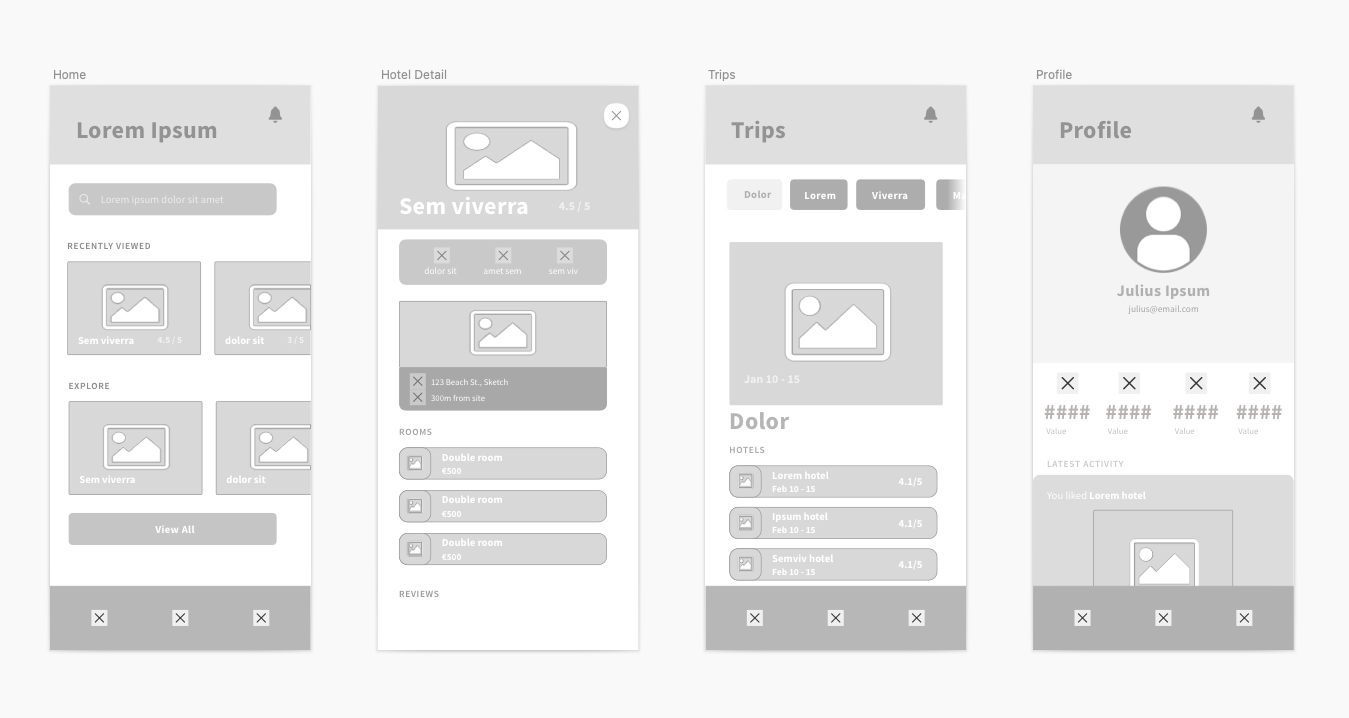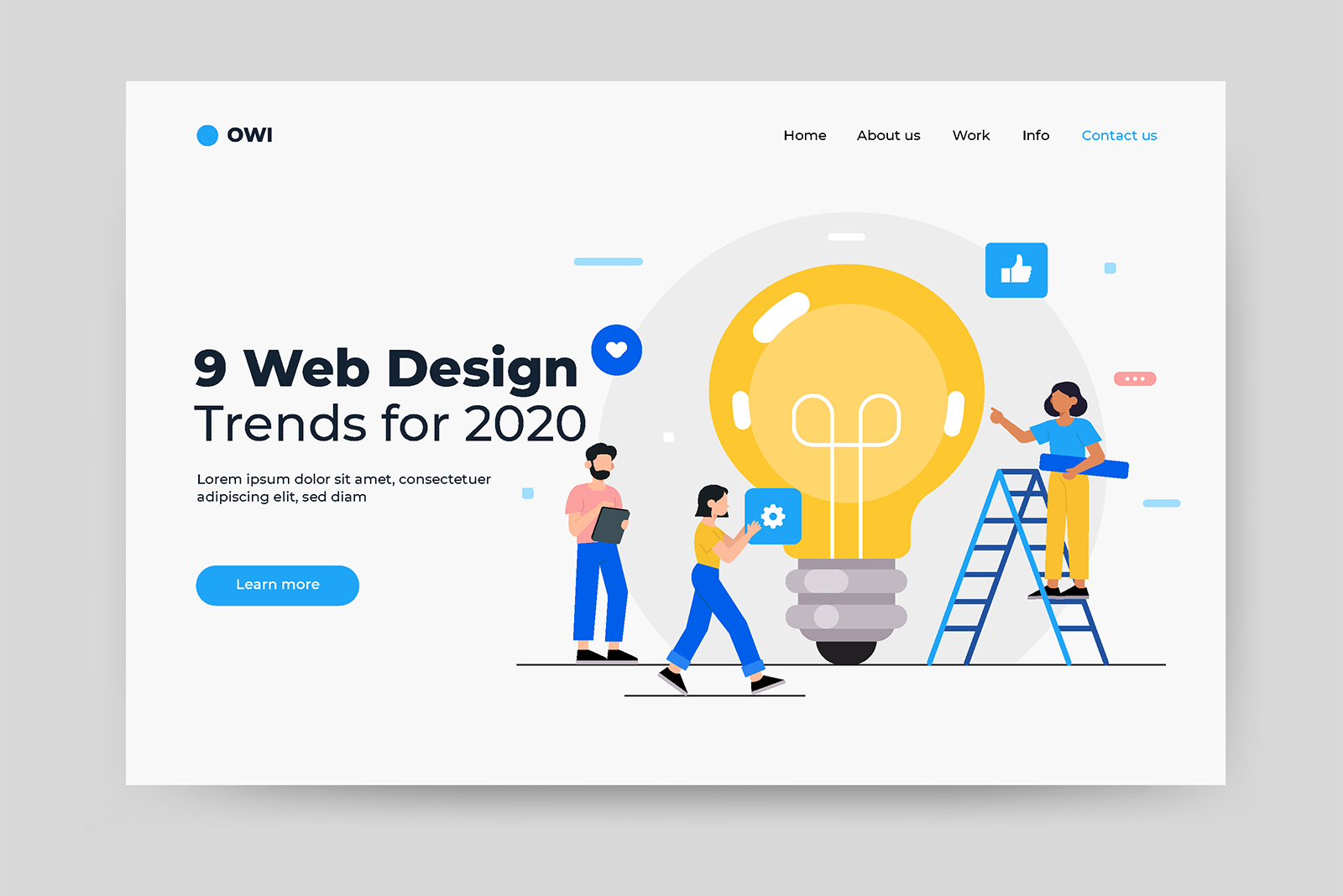
You have many options for visual design of the web. These techniques include color theory, moodboards, and Gestalt principles. In order to make the visual design appealing to users, you must consider trends. You should consider both short-term and long-term trends. The visual style should not be altered too often.
Modern techniques in visual design
The user experience on a website is greatly enhanced by visual design. It is a blend of typography, pictures, and layout to create a user-friendly interface. A visually pleasing design will improve user experience and help drive conversions.
Gestalt principles
Gestalt principles are a great way to improve web visual design. These principles focus on how people perceive colors and shapes. These principles can be used to help you design content that allows people to move naturally through it.

Color theory
Visual design is incomplete without color theory. This is not only helpful for designers when choosing the right colors, but can also improve their design skills. To create visual harmony, it is important to use opposite colours. It is easier to read colors with high contrast between background and text. This helps guide the reader's eye and makes them more readable. However, they can drain more energy. There are tools available that can make this process less stressful and easier.
Moodboards
Moodboards include images, patterns, fonts and colors. They can be compiled from many sources to give a designer an idea of what elements to use in their project. Designers can also use mood boards to look at the success stories of other products. Designers may also include sections from similar apps to their own in order to get an idea of how to incorporate them into their designs. Moodboards could also include images taken from magazines, books, or other physical items.
Typography
Typography is an essential aspect of web design. It helps people understand the message you are trying convey. Use bold typefaces, large fonts, underlined text, and contrasting styles to draw the user's attention. When done right, typography can create an emotional impact on a user and help your brand connect with a wide range of users.
Contrast
Contrast is one of the most important visual design principles on the web. It helps websites create a distinctive visual identity that captures the viewer's eye. It can also be used by websites to interact with their visitors.

Scale
The use of scale is a powerful tool for graphic designers. It allows them direct the viewer's attention towards a particular element. It also creates the illusion of depth. Scale can be used by web designers to create depth in the field.
Color palette
The most important aspect of web visual design is color. The website must stand out from the crowd. The right color palette can have a significant impact on how users experience the site. There are many ways to choose appropriate colors.
FAQ
How much do web developers make?
The hourly rate for a website you create yourself is $60-$80. You can charge more if you're an independent contractor. It is possible to charge between $150-200 an hour.
Are there any technical skills required to design and build my site?
No. You just need to be familiar with HTML and CSS. Online tutorials can be found that cover both HTML and CSS.
How do you choose a domain name
It is important that you choose a domain name that is memorable. If your domain name is not great, people won't be able to find you easily when they search the internet for your product.
Domain names need to be short and simple to remember, relevant for your brand, and unique. Ideal domain names are something people would type into their browser.
Here are some ways to choose a domain name.
* Use keywords relevant to your niche.
* Do not use (-), symbols or hyphens.
* Don't use.net or.org domains.
* Don't use words that have been used before.
* Avoid generic terms such as "domain" and "website".
* Make sure it is available.
Can a strong portfolio make me more likely to get hired as web developer?
Yes. You must have a portfolio to be considered for a job in web development or design. The portfolio must show examples of your skills and experience.
Portfolios are usually made up of examples of past projects. These can be anything that shows off your skill set. Your portfolio should include everything: wireframes and mockups as well as logos, brochures, websites, apps, and even logos.
What Should I Include In My Portfolio?
These are the things you should include in your portfolio:
-
Example of your work.
-
Links to your website (if applicable).
-
Links to your blog.
-
Links to social media pages.
-
These links will take you to the online portfolios of designers.
-
Any awards you received.
-
References.
-
Examples of your work.
-
These links show how to communicate with clients.
-
Here are some links to show that you're eager to learn new technologies.
-
These are links that show your flexibility
-
These links show your personality.
-
Videos showing your skills.
How to design a site?
The first step is to understand what you want your site to do for your customers. What are they looking at when they visit your site.
What problems might they have if they don't find what they're looking for on your site?
You now need to know how to fix the problems. Also, you need to ensure that your website looks professional. It should be easy for users to navigate.
You should have a well-designed website. You should ensure that your site loads quickly. If it does take too long, people won't stay as long as they would like to. They will go elsewhere.
You need to consider where your products are located when you build an eCommerce website. Do they all reside in one spot? Are they all in one place?
It is important to decide whether you will sell only one product or multiple products at once. Are you interested in selling one type of product? Or multiple types?
After you've answered these questions, it is possible to start building your website.
Now, it's time to take care of the technical aspects. What will it take to make your site work? Will it run fast enough? Can they access it quickly via their computers?
Will they be able buy anything without having pay an extra fee? Do they need to register with you before they can purchase anything?
These are essential questions that you need to ask yourself. Once you know the answers to these questions, you'll be ready to move forward.
What types of websites should you make?
This depends on your goals. You may choose to sell products online if you want to build a website. This will require you to set up a strong eCommerce site.
Blogs, portfolios, as well as forums are some other popular web types. Each one requires different skills and tools. To set up a blog for instance, you'll need to learn about blogging platforms like Blogger and WordPress.
You must decide how to personalize your site's appearance when choosing a platform. There are lots of free themes and templates available for each platform.
Once you have decided on a platform, you are able to start building your website by adding content. Pages can include images, videos, text and links.
It is now possible to publish your new website online. Visitors can view your site online once it has been published.
Statistics
- It's estimated that chatbots could reduce this by 30%. Gone are the days when chatbots were mere gimmicks – now, they're becoming ever more essential to customer-facing services. (websitebuilderexpert.com)
- It enables you to sell your music directly on your website and keep 100% of the profits. (wix.com)
- In fact, according to Color Matters, a signature color can boost brand recognition by 80%. There's a lot of psychology behind people's perception of color, so it's important to understand how it's used with your industry. (websitebuilderexpert.com)
- Studies show that 77% of satisfied customers will recommend your business or service to a friend after having a positive experience. (wix.com)
- The average website user will read about 20% of the text on any given page, so it's crucial to entice them with an appropriate vibe. (websitebuilderexpert.com)
External Links
How To
How to use WordPress for Web Design
WordPress is a tool for creating websites and blogs. It has many great features, including easy installation, powerful themes options, plug-ins and many other. This website builder lets you customize your site to suit your preferences. It comes with hundreds of themes and plugins that help you make any site. You can even add your domain name if you want. These tools allow you to easily manage the appearance and functionality of your website.
WordPress allows you to create beautiful websites even if you don't know how to code HTML. It doesn't matter if you don’t know much about coding. You can create a beautiful website in no time. In this tutorial, we'll show you how to install WordPress on your computer and then walk through some basic steps to get your new blog online. We will walk you through everything so you can do it at home.
WordPress.com is currently the most used CMS (Content Management System). It has approximately 25 million worldwide users and counting. Two versions of WordPress are available. You can either get a license from them at $29/month or you can download the source code for free.
WordPress is often chosen for its blogging platform because of many factors. One reason is that WordPress is extremely easy to use. Anyone with a basic knowledge of HTML can create a stunning site. Its flexibility is another advantage. WordPress.org has many free themes that allow you to change the look of your website without paying a dime. Finally, it's highly customizable. Developers offer premium add-ons which allow you to update posts automatically when someone comments or integrate social media sharing within your site.